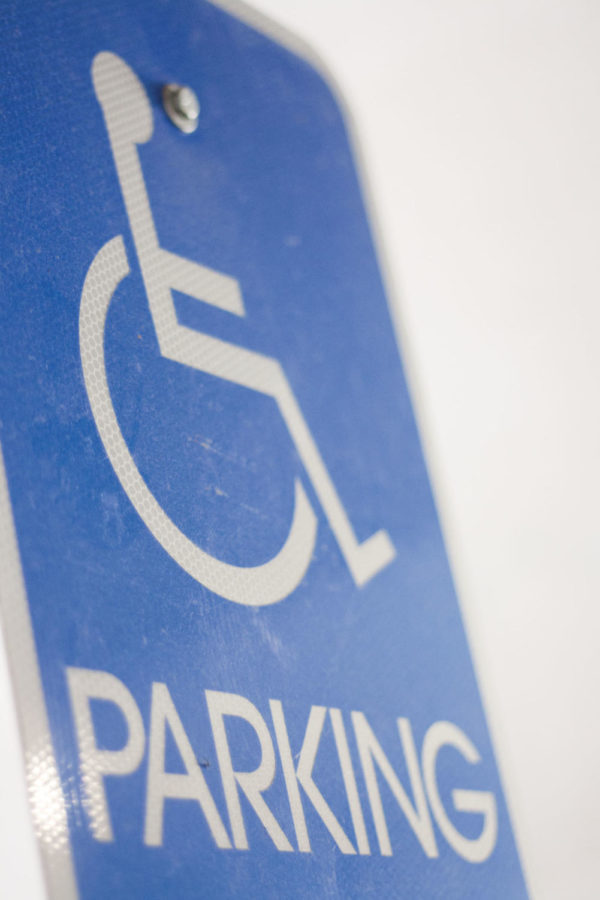Campustown lacks handicap accessibility
Photo: Kelsey Kremer/Iowa State Daily
The Government of the Student Body is contributing money for the renovation of the Memorial Union, which will include more handicap accessibility.
November 2, 2015
Judging by the amount of stairs leading off sidewalks and into businesses, Welch Avenue might not be welcoming to everyone.
Businesses are required to follow Title III of the American with Disabilities Act of 1990. Title III reads that businesses must accommodate to the needs of the disabled within the constraints of the business’s finances.
However, there is limited handicap accessibility in the Campustown district.
“It requires accessibility be improved without taking out excessive expenses that could harm the business,” said Tricia Crain, executive director of the Arc of Story County, a non-profit that helps people with disabilities.
Minimum requirements for handicap accessibility include having at least 60 percent of a business’ entrances grade level and accessible, 60-by-60-inch handicap accessible restroom stalls, 36-inch counter heights, the ability to have five pounds of pressure exerted to open doors and a 1-inch rise for every 12-inch run on ramps.
On a typical walk through Campustown, businesses can be found with door thresholds higher than three-quarters of an inch and thinner than 32 inches wide. Those who are wheelchair-ridden are often greeted with a flight of stairs, such as in the case of the Arc of Story County’s offices.
“We’re the advocacy group with people with disabilities, and I can’t even have them in my office,” Crain said.
Businesses are not always aware of their limited accessibility until a complaint is filed, which can be done in a variety of different ways.
In Ames, complaints can be filed through the Ames Human Rights commission, and those complaints are then investigated by volunteers. If the volunteers cannot find sufficient evidence, the case is then closed. If probable cause is found, an attempt to find a solution begins.
Commission members attempt to settle the complaint, but sometimes this isn’t completed. If no solution is found, the person who made the complaint can have a hearing before the commission.
Complaints can also be filed through the state.
The Iowa Civil Rights Act, which was enacted 50 years ago, deals with housing, employment, education, credit and public accommodation issues for people with disabilities. It uses investigation and settlement phases, following the same complaint process of local governments.
Although this act is considered state-wide, it is up to local jurisdictions to adopt the regulations.
The Americans with Disabilities Act is the all-encompassing, national act that dictates requirements for businesses in regards to helping people with disabilities.
Filing a complaint can be done online, via mail or by fax. The act provides protections for people with disabilities concerning: mobility, sight, speech, cognitive ability, learning ability, mental faculties, hearing, seizures, AIDS or diabetes.
Arvid E. Osterberg, university professor of architecture and co-author of the book “Access for Everyone: A Guide to Accessibility With References to ADASAD,” provides recommendations that go beyond the requirements of the act with what he describes as “inclusive design.”
Inclusive design is an architectural concept that includes thinking about everybody with any sort of disability, whether it be hearing, cognitive, mobility or others.
“[The goal is to] build environments that are easier for everybody,” Osterberg said.
After these adjustments are made, people without a disability rarely notice the change.
Some changes Osterberg advises include entrances without stairs, restrooms without entrance doors and an automatic door with a light on the door opener.
“It takes a lot of thought to determine if it’s worth fixing, but if you wait, it can be devastating,” Osterberg said. “Especially when it comes to safety, a lot of it is avoidable.”
Osterberg said he still faces ongoing issues with existing community businesses, saying the problem stems partly through management overcrowding businesses for marketing purposes.
He hopes that in 10 years the conversation about accessibility will not be a part of people’s dialogue, but he doesn’t see that happening soon.
Tom Oftedal, former assistant university architect with Facilities Planning and Management, summed up the architectural side of accessibility.
“We have to think beyond the code,” Oftedal said. “You can think about the nuts and bolts, but we have to be smarter than that. We have to get this done, and we have to get it right the first time.”
















